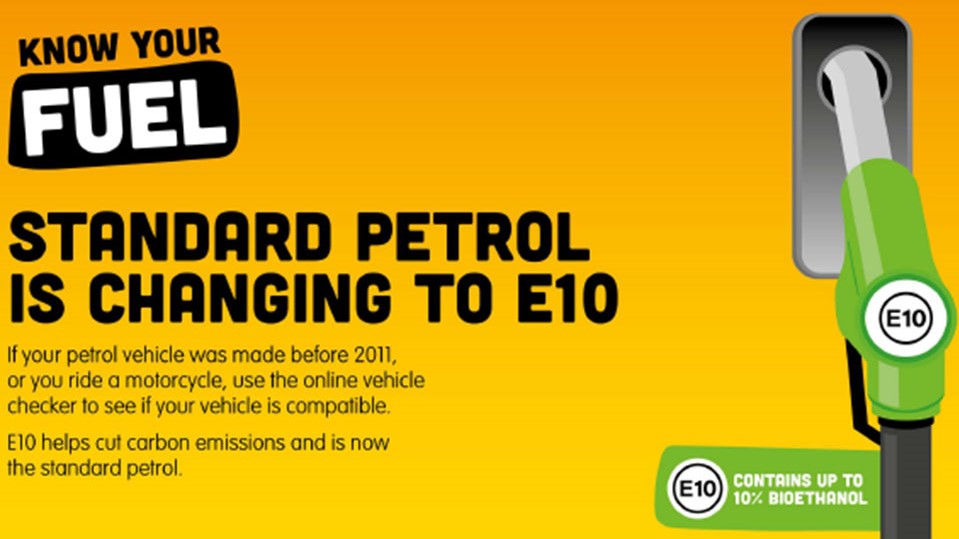Caring for Classics, Products, Service
Make E10 Petrol safe for your Classic Car
E10 Petrol is here to stay, so there is no point jumping on forums or writing to your MP, we as classic car owners simply have to understand what the difference is, and what we can do to protect our cars.
What is E10?
Ethanol (a biofuel) has long been added to regular pump petrol. The UK is one of the last places to increase the content of this biofuel to our regular unleaded petrol to 10% (Hence the ‘10 in E10). Increasing the amount of ethanol in fuel helps to reduce our countries dependence on Russian and OPEC Oil, which is good news if you are in Government and it helps to reduce our national carbon footprint. By how much is another fight altogether.
What are the problems with ethanol?
Ethanol ‘attacks’ some rubber components, degrading them to a point where they will leak, which is not ideal in a fuel system. It is also hygroscopic, which means it absorbs water from the atmosphere. This water separates in the fuel system, promoting corrosion and obviously won’t burn when it gets sucked into the engine.This is a particular problem for classic cars, because we store them for long periods of time and their fuel systems are not very well sealed from the atmosphere. E10 also has a slightly different calorific value and degrades quicker than traditional petrol so it can lead to running issues and poor performance
What can classic car owners do to protect against these issues?
Firstly there are fuel stabilisers available. These additives are simply combined with the fuel as you fill up. At Classic Project Shop we add MOTUL Stabilizer to all the fuel we use with classic cars. It is has a number of benefits:
- It reduces the effect of ethanol on rubber components
- It prevents gummy deposits being left behind as fuel evaporates
- It maintains the fuels volatility
Check and replace rubber components
The rubber pipework in your classic car is way more likely to fail because it is 40 years old than because you have filled up with E10. Just in the same way ten year old condoms won’t keep you childless, rubber seals and pipes perish and leak. This, generally isn’t as big a job as you might expect, especially in carburettor cars and it will help with future reliability. All fuel pipe and seal kits sold by reputable dealers will be ‘E10 proof’
Water pollution
It doesn’t take a rocket scientist to understand that water in fuel is a bad thing. Water gets into your fuel system in two ways.
- Condensation in the fuel tank
- Water absorption by Ethanol
The easiest way to avoid this is to use your car regularly, fill the tank each time and run it to as close to empty as possible before refilling – Just in the way we do with a modern car. However our classics tend to be occasionally used and as such the fuel get old before we use it up.
Fuel Stabiliser will help with absorption to a certain extent, but not enough to make a real difference to a classic that is stored for months at a time. The best thing you can do is keep your car in a low humidity environment (around 40%) where the temperature remains constant. That way the build up of water is negligible over a 6 month period.
If you can’t regulate the temperature or humidity, or the car is going to be stored for longer than 6 months at a time, then we would always fill the tank to the brim, add stabiliser and then drain the tank before putting it back on the road.
Tuning and performance
E10 does have a slightly different calorific value and burn temperature to standard unleaded. Most electronically fuel injected cars can work this out for themselves, but Carburettor or mechanical fuel injection cars often need tuning to run nicely. This is best done with a fresh tank of the fuel you most often use.

